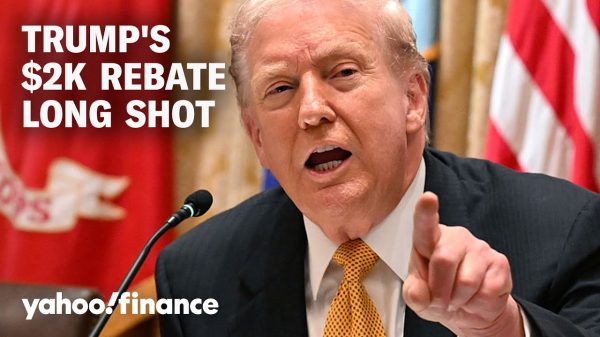The policy-sensitive 2-year Treasury yield climbed for a third straight session during Monday’s shortened pre-holiday trading, even after U.S. economic data came in somewhat mixed.
The spread between 2- and 10-year Treasury yields ended the New York session at minus 108.2 basis points, one of the most inverted levels in almost 42 years.
What happened
-
The yield on the 2-year Treasury
TMUBMUSD02Y,
4.925%
rose 6.1 basis points to 4.938% from 4.877% on Friday. Monday’s level is the highest since March 8, based on 3 p.m. Eastern time figures from Dow Jones Market Data. Yields move in the opposite direction to prices. -
The yield on the 10-year Treasury
TMUBMUSD10Y,
3.858%
advanced 3.8 basis points to 3.856% from 3.818% as of Friday afternoon. Monday’s level is the highest since March 9. -
The yield on the 30-year Treasury
TMUBMUSD30Y,
3.868%
rose 2.3 basis points to 3.876% from 3.853% late Friday.
What drove markets
In data released on Monday, the Institute for Supply Management’s manufacturing index fell to 46% in June from 46.9% in the prior month, marking its lowest reading since May 2020. Numbers below 50% signal contraction in the industrial side of the economy.
Economists polled by The Wall Street Journal had forecast the index to register 47.3% in June.
Separately, construction spending rose 0.9% in May, the Commerce Department said.
Activity in fixed income was thinner than usual as the Treasury market closed at 2 p.m. Eastern time on Monday, ahead of Tuesday’s Fourth of July break. Major U.S. stock exchanges closed an hour before the bond market, at 1 p.m.
Looking ahead, investors will get minutes of the Federal Reserve’s June 13-14 meeting on Wednesday and June’s nonfarm payrolls report on Friday. The jobs report is likely to influence traders’ thinking on what the Fed will do next with regard to monetary policy.
Markets are pricing in an 88.7% probability that the Fed will raise interest rates by 25 basis points to between 5.25%-5.5% on July 26, according to the CME FedWatch Tool. Traders also see a 30.3% chance of a second hike of the same size by year-end, which would take interest rates to between 5.5%-5.75%, and are pricing in a slight chance that rates could end up even higher.
What analysts are saying
Along with the renewed discussion of an even higher terminal rate “has come the revitalized risk that the Fed’s actions act as a drag not only on growth and inflation, but also does more damage to the banking sector where we’ll argue the sense of calm is tenuous at best,” said BMO Capital Markets strategists Ben Jeffery and Ian Lyngen. “This is another driver of our assumption that 50 bp in additional rate increases is by no means a foregone conclusion.”
“With policy already deep into restrictive territory, we’re skeptical that an additional 50 bp in overnight rates will truly be a game changer as it relates to returning core consumer prices to 2%. Instead, it will be a longer period with elevated rates that allows the lagged impact of policy to continue to flow through to the labor market, the consumer, and ultimately inflation,” they said in a note.
Read the full article here









